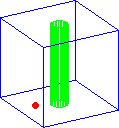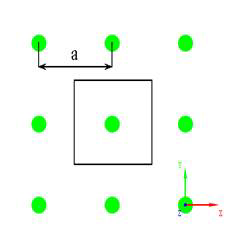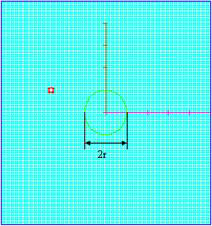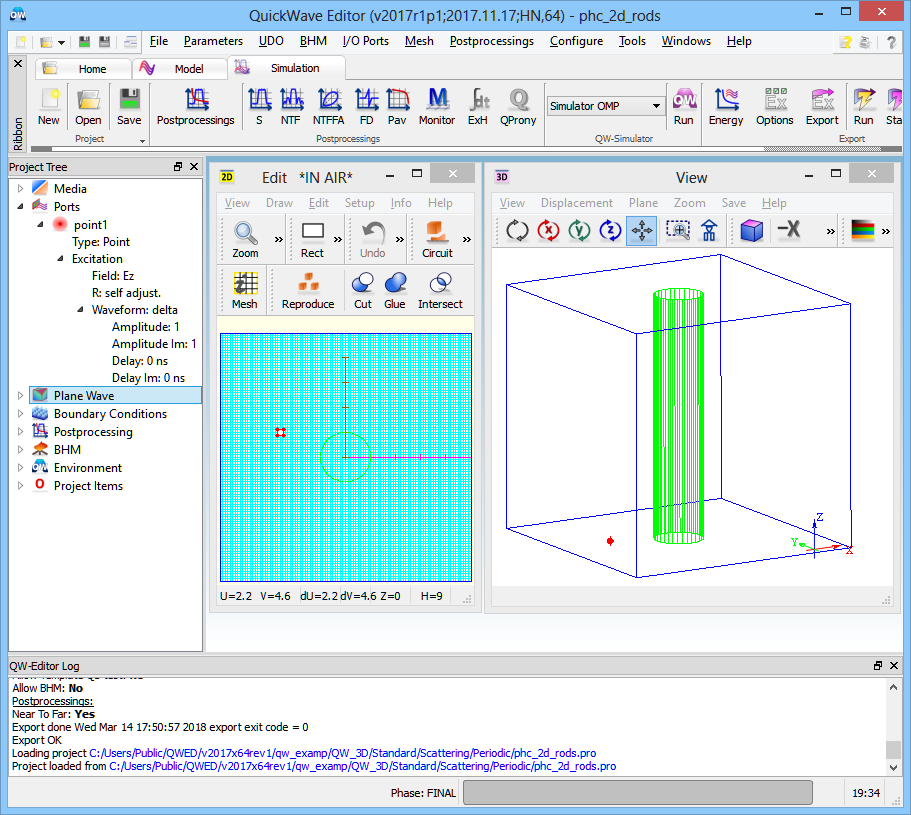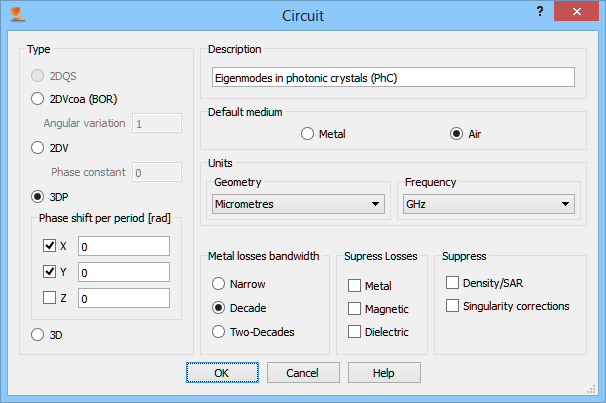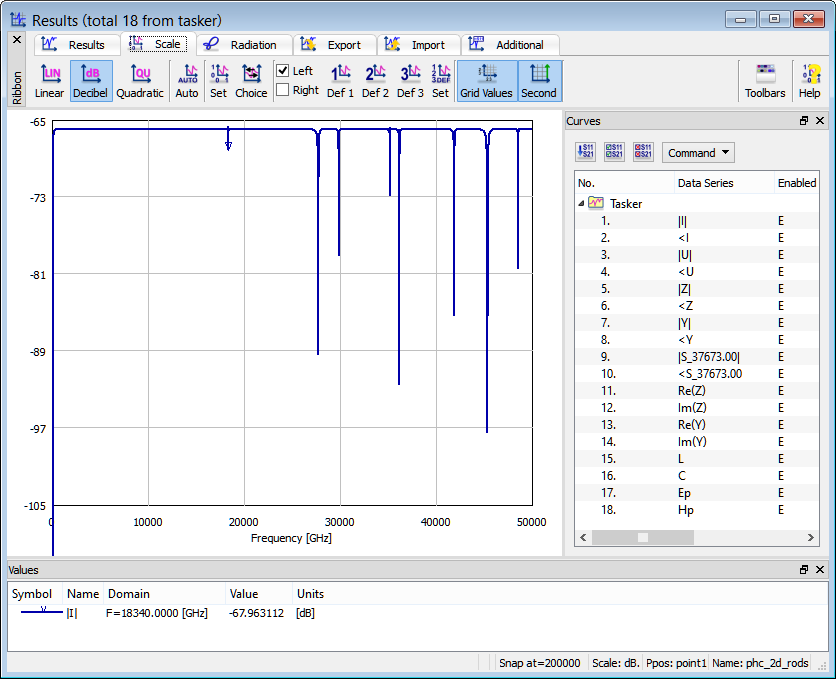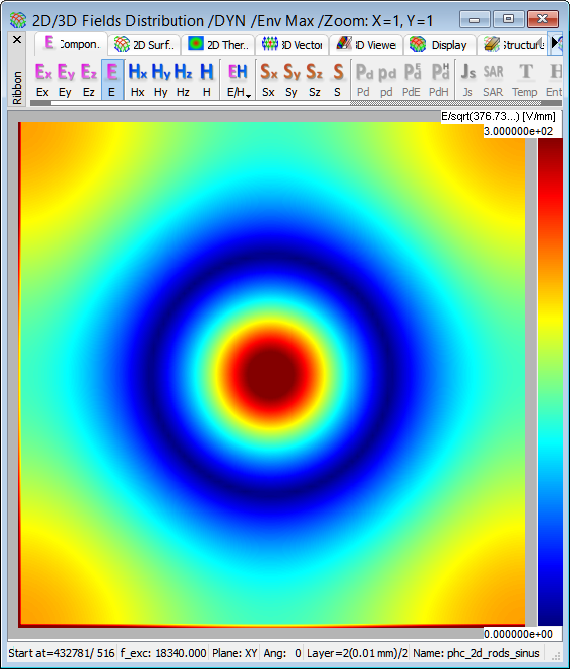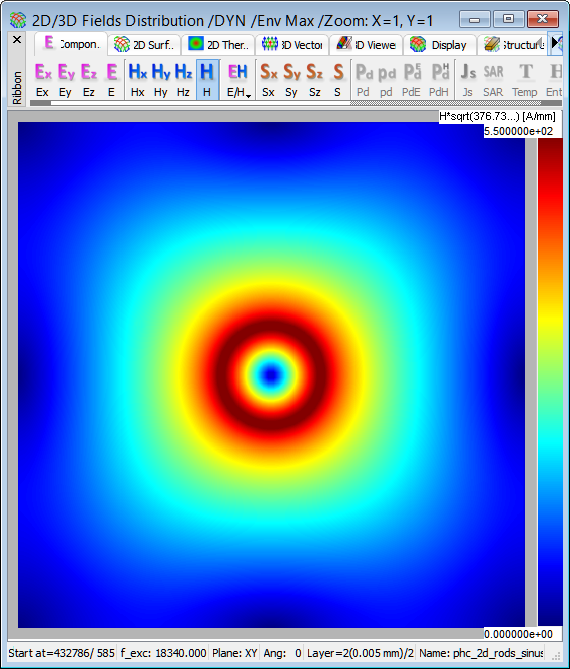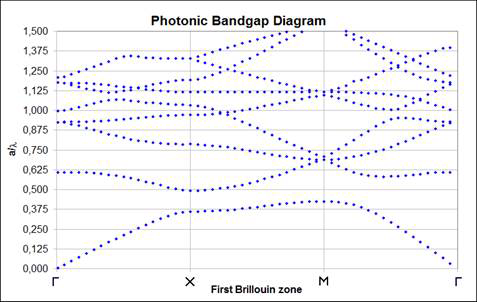Eigenmodes in photonic crystals
The present example considers eigenmodes in photonic crystals.
Eigenmodes usually refer to the resonating modes of the considered structure and each of these modes is associated with a specific wave vector, called eigenvalue. Many physical structures are periodic, like photonic crystals (PhC).
In the considered case, for the purpose of extracting eigenmodes in PhC consisting of the infinite lattice of dielectric GaAs rods of radius r = 1 μm and lattice constant a = 10 μm, we take advantage of periodic boundary conditions (PBC) implemented in QuickWave software.
Infinite rectangular lattice of GaAs rods (r=1 µm, a=10 µm).
Eigenmodes in photonic crystals (PhC) project in QW-Editor.
The model consists of one period of the lattice. The aim is to find TM modes with Ez polarization that satisfy the phase shift per period in X and Y directions equal to 0 radian but with no phase variation along the rods. Hence, the model may be reduced to one FDTD layer with electric boundary conditions at the top and at the bottom.
Circuit dialogue with PBC settings.
For the purpose of retrieving eigenfrequencies of the structure, the FD-Probing postprocessing is activated in a frequency range from 0 GHz to 50000 GHz, with a frequency step of 10 GHz.
FD-Probing postprocessing configuration dialogue.
The structure is excited with a wideband delta signal to perform a Fourier transform of the injected electric current. Consequently, we observe several resonances indicating eigenmodes that satisfy the imposed phase shifts per period.
Spectrum of the injected electric current.
Distribution of time-maximum envelope of total E field at 18.34 THz.
Distribution of time-maximum envelope of total H field at 18.34 THz.
Following the same procedure to collect the data for several phase shifts, we obtain a so called photonic bandgap (PBG) diagram in the first Brillouin zone. There is a bandgap within the range a/λ = 0.42 ÷ 0.49 (f = 12.6 THz ÷ 14.7 THz). It means that no TM mode can propagate in such a 2D lattice within this frequency range. In other words, such a structure may be treated as a very good shield for TM polarization incident at any angle within the bangap range.
PBG diagram in the first Brillouin zone.


